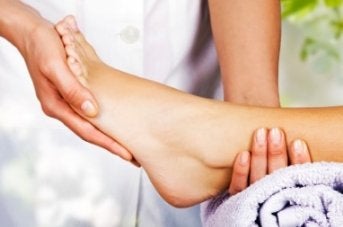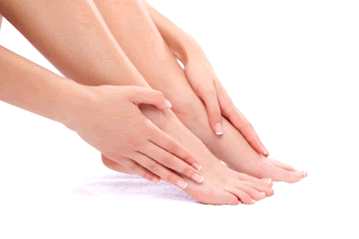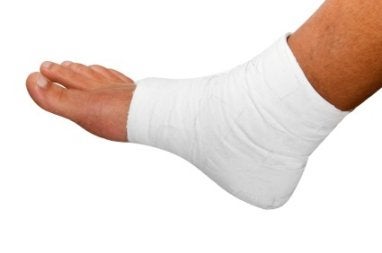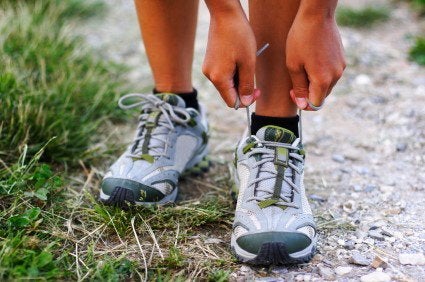-
Sneakers Becoming More Popular than High Heels due to Comfort
 When it comes to fashion, many people would assume that footwear such as high heels, sandals and espadrilles would always remain in style. In the past, sneakers had always been associated with sports performance; a realm beyond fashion. Trends appear to be changing, however, as sneakers are becoming more and more prevalent with the revival of casual comfort in fashion footwear. Jaime Barr, footwear and accessories editor at trend forecasting firm WGSN, shared, “Now that people are used to having comfort features worked into their shoes it’s going to be really hard to go back.”
When it comes to fashion, many people would assume that footwear such as high heels, sandals and espadrilles would always remain in style. In the past, sneakers had always been associated with sports performance; a realm beyond fashion. Trends appear to be changing, however, as sneakers are becoming more and more prevalent with the revival of casual comfort in fashion footwear. Jaime Barr, footwear and accessories editor at trend forecasting firm WGSN, shared, “Now that people are used to having comfort features worked into their shoes it’s going to be really hard to go back.” High heels have a history for causing foot and ankle problems. If you have any concerns about your feet contact Dr. Jon Sherman of Kentlands Foot and Ankle Center . Our doctor will treat your foot and ankle needs.
Effects of High Heels on the Feet
High heels are popular shoes among women because they are associated with femininity. Despite their appeal, they can cause many health problems if worn too frequently.
What parts my body will be affected by high heels?
- Ankle Joints
- Achilles Tendon – may shorten and stiffen with prolonged wear
- Balls of the Feet
- Knees – heels cause the knees to bend constantly, creating stress on them
- Back – they decrease the spine’s ability to absorb shock, which may lead to back pain. Also, the vertebrae of the lower back may compress.
What kinds of foot problems can develop from wearing high heels?
- Corns
- Calluses
- Hammertoe
- Bunions
- Morton’s Neuroma
- Plantar Fasciitis
How can I still wear high heels and maintain foot health?
If you want to wear high heeled shoes, make sure that you are not wearing them every day, as this will help prevent long term physical problems. Try wearing thicker heels as opposed to stilettos to distribute weight more evenly across the feet. Always make sure you are wearing the proper shoes for the right occasion, such as sneakers for exercising. If you walk to work, try carrying your heels with you and changing into them once you arrive at work. Adding inserts to your heels can help cushion your feet and absorb shock; you can buy either full inserts or metatarsal pads.
If you have any questions please feel free to contact our office located in Gaithersburg, MD . We offer the newest diagnostic tools and technology to treat your foot and ankle needs.
Read more about the effects of high heels.
-
Effect of High-Heels on the Feet
For hundreds of years, women have been wearing various kinds of high-heels for mostly aesthetic reasons. Women who wear high-heels appear to be taller and to have longer and thinner legs, and the wearer’s gait and posture changes. Though high-heels have had an association with femininity and have kept them popular over the years, there are definite health problems caused by wearing them too frequently.
The motion of the ankle joints is limited when heels are worn. The ankle joint is very important to the body when it comes to walking. Because of their location, these joints have a great deal of weight put on them. Thus, it is very important to keep them as healthy as possible. The Achilles tendon is the main tendon in the ankle. Wearing high-heels too often, studies have shown, can cause the calf muscle and Achilles tendon to shorten and stiffen, which can cause problems when shoes without heels are worn.
By putting a great deal of pressure on the ball of the foot, by forcing the toes into a small toe box, high-heels can cause or may worsen many foot problems, such as corns, hammertoe, bunions, Morton’s neuroma and plantar fasciitis.
Not only does wearing very high-heels regularly have negative effects on the feet, the rest of the body can suffer as well. The knees, one of the most important joints in the entire body, can be affected by wearing high-heels. High-heels causes the knees to stay bent all the time. Also, it can cause them to bend slightly inward as well. Doctors believe that women can suffer from osteoarthritis later in life because of constantly walking like this. By limiting the natural motion of the foot during walking, high-heels also cause an increased in stress on the knees.
Similarly, the back may also be affected by high-heels because it causes the back to go out of alignment. If high-heels are worn constantly, the spine’s ability to absorb shock can cause continued back pain. They can compress the vertebrae of the lower back, and can overuse the back muscles.
However, this is not to say that high-heels can never be worn. If worn occasionally, they will not cause serious problems. They should not be worn every day in order to avoid the long-term physical health problems of the feet, knees, ankles, and back like mentioned above.
-
Diabetic Foot Care
Millions of people are affected with diabetes each year. Diabetes damages blood vessels in all parts of the body, especially the feet. The legs and feet may develop slow blood flow, which causes neuropathy (nerve damage). Once a diabetic patient develops neuropathy, it is important that the feet are well taken care of, or else the lower limbs may have to be amputated. This only happens in drastic cases, but it shows how seriously diabetic foot care should be taken.
It is very important to always wash and dry the feet thoroughly, especially in between the toes, when diabetic. Secondly, examining your feet and toes for redness or sores must be done, even if you do not feel pain. You may also want to examine your feet from the bottom. Try to avoid wearing colored socks to prevent infections that may occur from the die. Additionally, well-fitting socks are highly recommended.
A diabetic’s physician should always monitor their blood levels to test how well the blood sugars are being controlled during the p. In addition to giving advice about everyday eating habits and foot care, a physician may prescribe medicine to help with neuropathy of a diabetic patient. It is also advised to see a podiatrist if experiencing any feet conditions. Toe nails may also need to be taken care of by a podiatrist, since some patients may cut too deep around the cuticles, causing infection.
A person can take care of their feet at home by following the instructions of their physician. Using creams on one’s feet is also an effective way to heal dryness. When using tools to remove calluses, use caution, as severe diabetics may not be able to feel pain on their feet. If any complications arise do not hesitate to call a podiatrist.
On a daily basis, diabetic feet must be checked. If you are ever concerned about something, contact your health care professional. You never want to wait until a wound gets too bad to treat. If left untreated, gangrene may develop. Gangrene is a serious infection that can cause in diabetics that can lead to sepsis or amputation. It is also important for diabetics to be on the lookout for ulcers. Ulcers are sores that develop from tissue loss on the skin. They can be quite painful and require intensive treatment. Early treatment and everyday inspection are imperative to staying healthy.
-
Maggots May be Used to Heal Chronic Diabetic Ulcers
 According to a study being tested at the Malcom Randall Veterans Affairs Medical Center, maggots may be used to treat chronic diabetic ulcers. While maggot therapy has been an ancient practice, it is going through clinical trials to see if the feasting of dying tissue and germs in wounds can have positive effects. The study is set into involve 128 Veterans with diabetic ulcers where the maggots or larvae will be produced and sterilized in an “eight step-step control” routine. Although the term “maggot” does have negative connotations, they have been proven to clean out wounds nicely under the right control.
According to a study being tested at the Malcom Randall Veterans Affairs Medical Center, maggots may be used to treat chronic diabetic ulcers. While maggot therapy has been an ancient practice, it is going through clinical trials to see if the feasting of dying tissue and germs in wounds can have positive effects. The study is set into involve 128 Veterans with diabetic ulcers where the maggots or larvae will be produced and sterilized in an “eight step-step control” routine. Although the term “maggot” does have negative connotations, they have been proven to clean out wounds nicely under the right control. Although the use of maggots to treat diabetic feet may seem kind of extreme, general diabetic foot care is extremely important. If you are suffering from diabetes or have any other concerns about your feet, contact Dr. Jon M. Sherman of Kentlands Foot and Ankle Center . Our doctor will diagnose and treat your foot and ankle needs.
Diabetic Foot Care
Diabetes affects millions of people every year. Diabetes can damage blood vessels in many parts of the body, including the feet. Because of this, taking care of your feet is essential if you have diabetes, and having a podiatrist help monitor your foot health is highly recommended.
The Importance of Caring for Your Feet
- Routinely inspect your feet for bruises or sores.
- Wear socks that fit your feet comfortably.
- Wear comfortable shoes that provide adequate support.
Patients with diabetes should have their doctor monitor their blood levels because blood sugar levels play such a huge role in diabetic care. Monitoring these levels on a regular basis is highly advised.
It is always best to inform your healthcare professional of any concerns you may have regarding your feet, especially for diabetic patients. Early treatment and routine foot examinations are keys to maintaining proper health, especially because severe complications can arise if proper treatment is not applied.
If you have any questions, please feel free to contact our office in Gaithersburg, MD
. We offer the newest diagnostic and treatment technologies for all your foot and ankle needs.
Read more about diabetic foot care
-
Boston College Loses Jon Hillman Due to Foot Surgery
 Boston College has lost tailback Jon Hilliman due to foot surgery. According to Coach Steve Addazio, the team will have to work hard as he rushed 122 yards and 24 carries during his last game. Other tailbacks, Myles Willis and Marcus Outlow, are currently both suffering from shoulder injuries leaving junior tailback, Tyler Rouse to maintain the position. “We will be without Jon Hilliman. This was a physical game that took a toll on us from a personnel standpoint,” Addazio stated.
Boston College has lost tailback Jon Hilliman due to foot surgery. According to Coach Steve Addazio, the team will have to work hard as he rushed 122 yards and 24 carries during his last game. Other tailbacks, Myles Willis and Marcus Outlow, are currently both suffering from shoulder injuries leaving junior tailback, Tyler Rouse to maintain the position. “We will be without Jon Hilliman. This was a physical game that took a toll on us from a personnel standpoint,” Addazio stated. Sports related foot and ankle injuries need proper treatment before players can go back to their regular routines. If you have any concerns about your feet and ankles contact Dr. Jon M. Sherman of Kentlands Foot and Ankle Center . Our doctors will treat your foot and ankle needs.
Sport Related Foot and Ankle Injuries
Foot and ankle injuries are a common occurrence when it comes to athletes of any sport. While many athletes dismiss the initial aches and pains, the truth is that ignoring potential foot and ankle injuries can lead to serious problems. As athletes continue to place pressure and strain the area further, a mild injury can turn into something as serious as a rupture and may lead to a permanent disability. There are many factors that contribute to sports related foot and ankle injuries, which include failure to warm up properly, not providing support or wearing bad footwear. Common injuries and conditions athletes face, including:
- Plantar Fasciitis
- Plantar Fasciosis
- Achilles Tendinitis
- Achilles Tendon Rupture
- Ankle Sprains
Sports-related injuries are commonly treated using the RICE method. This includes rest, applying ice to the injured area, compression and elevating the ankle. More serious sprains and injuries may require surgery, which could include arthroscopic and reconstructive surgery. Rehabilitation and therapy may also be required in order to get any recovering athlete to become fully functional again. Any unusual aches and pains an athlete sustains must be evaluated by a licensed, reputable medical professional.
If you have any questions please feel free to contact our office located in Gaithersburg, MD . We offer the newest diagnostic tools and technology to treat your foot and ankle needs.
Read more about sports related injuries.
-
Sport Related Foot And Ankle Injuries
Foot and ankle injuries are common among people who participate in sports. Several factors contribute to this. They include failing to stretch or warm up properly, not wearing the proper type of shoe and not taping or providing other types of support for the ankle or foot. The most common foot and ankle injuries suffered by people involved in sport are plantar fasciitis, ankle sprains and Achilles tendon damage or ruptures. If not treated properly they can lead to permanent disability.
Plantar fasciitis is a painful condition. It is inflammation of the plantar fascia, the thick fibrous band of tissue running from the heel to the base of the toes. There are several effective treatments for this ailment. Doctors often proscribe rest, massages, stretching, night splints, physical therapy, anti-inflammatory medication, corticosteroids or surgery usually in that order. The most effective treatment for plantar fasciitis is orthotics, such as foot supports. Surgery is occasionally used as a last resort.
The Achilles tendon is the largest tendon in the body. It connects the calf muscles to the heel bone. Running, jumping and walking all impact this tendon. Two common injuries to the Achilles tendon are tendonitis and a rupture of the tendon. Tendonitis is inflammation in the tendon often caused by an increase in the amount and intensity of stress placed on it. It can either be treated non-surgically with rest, ice or anti-inflammatory medication or surgery may be required. A rupture (tear) of the Achilles tendon can be treated by placing the lower leg in a cast for several weeks or with surgery. Many physicians feel surgery is the better option because it lowers the risk of re-ruptures. Both methods require 4 to 6 months of rehabilitation.
Ankle sprains are the most common sports related foot and ankle injury. A sprain occurs when the ligament holding the ankle bones and joint stretches beyond its normal range. It can be treated non-surgically with a combination of rest, ice wrapped around the joint for 30 minutes immediately after injury, compression by a bandage and elevating the ankle above the heart for 48 hours. This combination is referred to as RICE. Severe ankle sprains in which the ligaments are torn may require arthroscopic or reconstructive surgery followed by rehabilitation
Treating these injuries is relatively simple if they are identified and addressed early. Many athletes dismiss the initial aches and pains associated with injury as just soreness or tired muscles. Their first response is usually to try to work through it. This can lead to serious problems. Many minor injuries are made far more serious when athletes continue to put strain and pressure on them. That attitude can change a mild strain into a serious strain and a minor tear into a rupture. Athletes should have unusual aches and pains evaluated by a skilled, licensed medical professional.
-
Tommy Manning Suggests Tips for Getting the Right Shoe Size
 Former U.S. Mountain Running Team member Tommy Manning is no stranger to novice runners who select running shoes based more on looks than function and fit. When the athlete previously worked in a running specialty store, Manning often encounter customers who would ignore the running shoes suggested to them by the store’s running experts in favor of a pair that is more fashionable or better looking. “Feet come in all shapes and sizes, with varying widths, arch heights and amounts of pronation or supination,” he shares. “So you should by the shoe that is best for your foot in function and fit.”
Former U.S. Mountain Running Team member Tommy Manning is no stranger to novice runners who select running shoes based more on looks than function and fit. When the athlete previously worked in a running specialty store, Manning often encounter customers who would ignore the running shoes suggested to them by the store’s running experts in favor of a pair that is more fashionable or better looking. “Feet come in all shapes and sizes, with varying widths, arch heights and amounts of pronation or supination,” he shares. “So you should by the shoe that is best for your foot in function and fit.” Getting the right shoe size is an important part of proper foot health. If you have any concerns about your feet contact Dr. Jon M. Sherman of Kentlands Foot and Ankle Center . Our doctor will treat your foot and ankle needs.
Getting the Right Shoe Size
There are many people that wear shoes that are ill-fitting, which affects their feet and posture. Selecting the right shoes is not a difficult process so long as you keep several things in mind when it comes to selecting the right pair.
- When visiting the shoe store, use the tools available to measure your foot
- When measuring your foot with your shoe on, add 1-2 inches to the size
- Be sure there is ‘wiggle room’. There should be about an inch between your toes and the tip of your shoes
- Do not always assume you are the same size, as manufacturers run differently
- Purchase shoes later in the day as your feet swell as the day progresses
- If a shoe is not comfortable, it is not suitable. Most shoes can’t be ‘broken in’, and comfort should be the ultimate goal when it comes to choosing the right pair of shoes
As our feet hold our body weight and keep us moving, it is important to treat your feet right by choosing the right pair of shoes that can provide them comfort and mobility with minimal pain.
If you have any questions please feel free to contact our office located in Gaithersburg, MD . We offer the newest diagnostic tools and technology to treat your foot and ankle needs.
Read More about getting the right shoe size.
-
Getting the Right Shoe Size: To Keep Your Feet Happy
People are constantly wearing the wrong fitting shoes. Though it isn’t hard, picking the right shoes does require keeping a few things in mind.
Shoe stores have rulers, so you can get an exact measurement of your feet. Always measure your feet with shoes on, because measuring just your foot will give you a shoe size that is 1-2 inches too small for picking the right size shoe.
To ensure that your toes won’t be cramped, make sure there is wiggle room. Approximately one inch should be between your toes and the tip of your shoe. It is easy to tell if your shoes are too tight, because you will start to experience pain, blisters, and swelling.
Additionally, do not always assume your shoe size will be the same at every store. Manufacturers sometimes run differently, and your shoe size will vary. Make sure the stores your purchase from have return policies, incase there is a problem.
Rather than shoe shopping in the morning, it is advised to shop for shoes later in the day, since your feet are swelled. If shoes are purchased in the morning, they may not be as snug as they should be. Furthermore, not all two feet are the same size; therefore, accommodations may be necessary.
An overall big concern in buying shoes is making sure they are comfortable and supportive. There is not such thing as a shoe being ‘broken in’. If they are uncomfortable at the store, they likely will always be uncomfortable.
Since we do a lot of walking, it is important that we pick the right shoes. Our feel will only benefit from this, and we will be happier and healthier because of it.
RECENT POSTS
categories
- Uncategorized
- Featured Articles
- Foot Disorders
- Broken Ankle
- Broken Toe
- Fracture
- Foot Health
- Foot Care
- Arthritis
- Foot Pain
- Skin Cancer
- Podiatry Appointment
- Custom Orthotics
- Podiatrist
- Diabetes
- Gout
- Heart Health
- National Nutrition Month
- National Foot Health Awareness Month
- Foot Safety
- Foot and Ankle Injuries
- Falls Prevention
- Chronic Heel Pain
- Shoes
- Laser Therapy
- Quoted
- Physical Therapy
- KeryFlex
- Sweat
- Summer Foot Care
- Sports Injury
- ESWT
- Fungal Toenails
- Bunion


